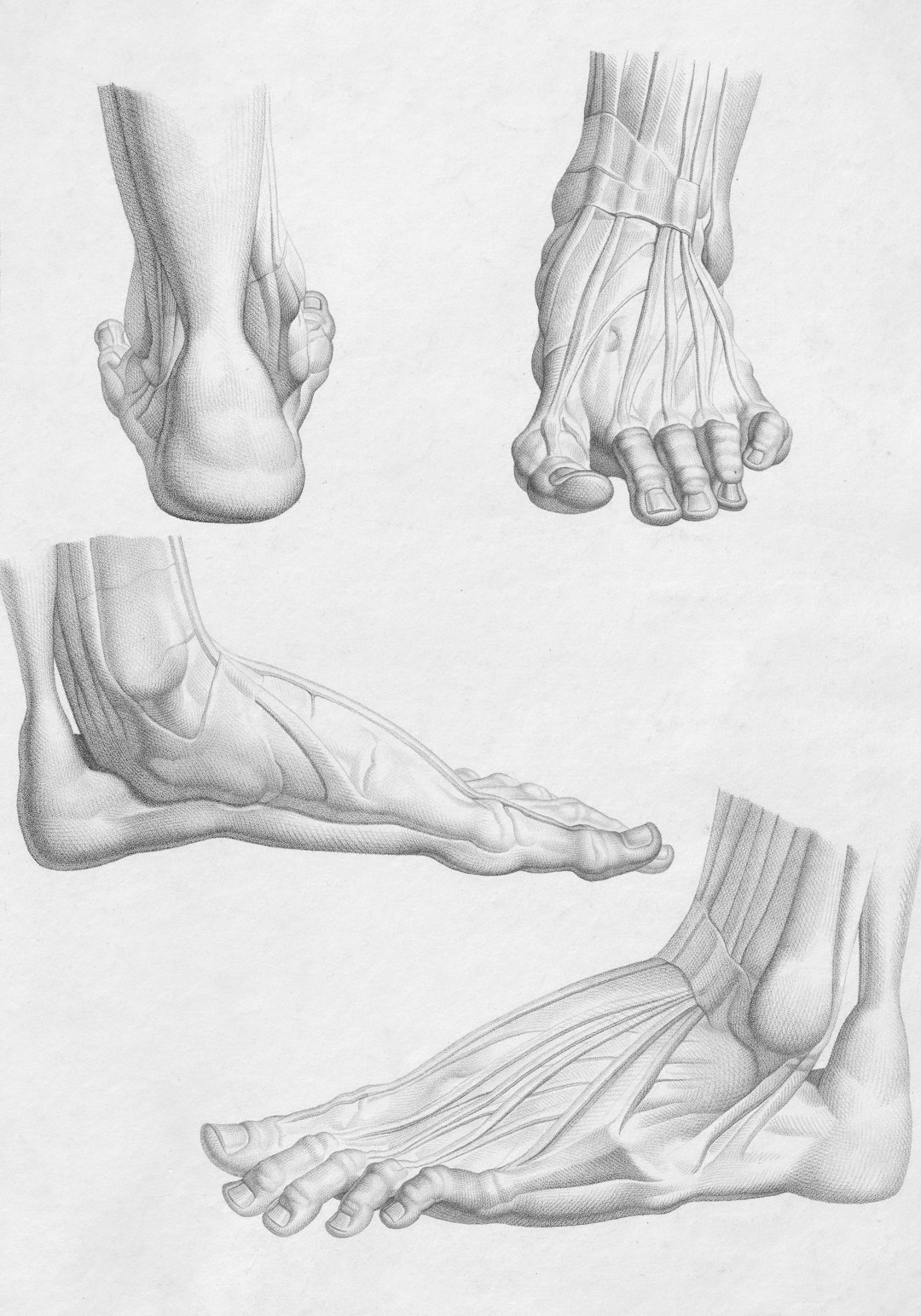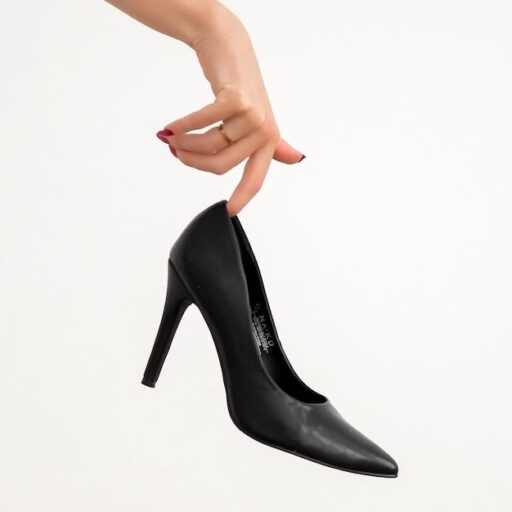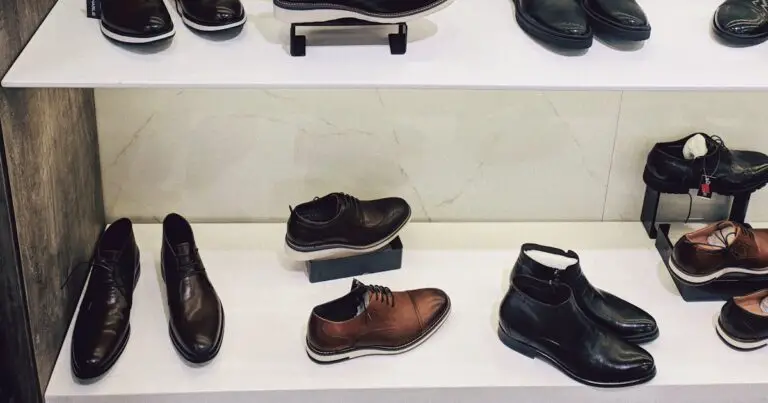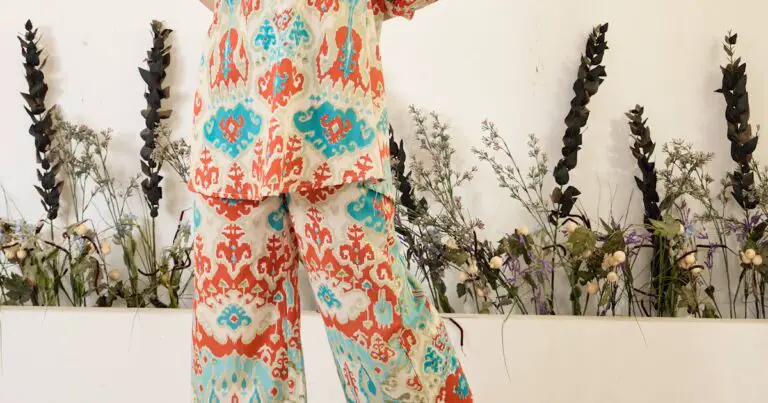Support our educational content for free when you purchase through links on our site. Learn more
How to Choose the Best Shoe Brand for Your Foot Type in 2025 👟

Ever bought a pair of shoes that looked amazing but left your feet screaming by the end of the day? You’re not alone. Finding the perfect shoe brand tailored to your unique foot type can feel like decoding an ancient puzzle. But what if we told you that understanding your foot’s arch, pronation, and shape could unlock a world of comfort and style you never thought possible? Stick with us, and you’ll discover expert tips, brand spotlights, and insider secrets that will transform your shoe shopping forever.
Did you know that wearing the wrong shoe type for your foot can increase injury risk by up to 50%? 😱 Later, we’ll reveal how to identify your foot type with simple tests and match it to the best shoe brands like Brooks, Altra, and Hoka One One. Plus, we’ll share 12 expert tips that will save your feet (and your wallet) from costly mistakes. Ready to step into your best fit yet?
Key Takeaways
- Identify your foot type by arch height, pronation, and width to guide shoe selection.
- Match shoe features like cushioning, stability, and toe box shape to your foot’s needs.
- Choose brands known for catering to specific foot types—Brooks for stability, Altra for wide toe boxes, Hoka for cushioning.
- Try shoes on later in the day with your usual socks and walk around to test fit.
- Replace shoes regularly to maintain support and prevent injury.
- Use expert tips like measuring both feet and understanding heel-to-toe drop for optimal comfort.
👉 Shop top shoe brands for your foot type:
Table of Contents
- ⚡️ Quick Tips and Facts
- 👣 Unpacking Your Unique Footprint: A Deep Dive into Foot Anatomy & Biomechanics
- 🔍 Decoding Your Foot Type: Arches, Pronation, and More!
- 👟 The Shoe-Foot Connection: Matching Features to Your Foot’s Needs
- 🏃♀️ Your Activity, Your Shoe: Tailoring Footwear for Every Pursuit
- 🏆 Brand Spotlight: Our Top Picks for Every Foot & Function
- 📏 The Perfect Fit Formula: Sizing, Trying On, and Expert Tips
- 💡 12 Expert Tips for Choosing Your Best Shoe Brand & Fit
- Know Your Foot Type Like the Back of Your Hand
- Understand Your Pronation Pattern
- Consider Your Activity and Purpose
- Prioritize Comfort Over Style (Mostly!)
- Measure Both Feet (Yes, Both!)
- Shop in the Afternoon
- Bring Your Own Socks
- Walk Around in the Shoes
- Don’t Assume Your Size
- Check the Toe Box
- Trust Your Gut (and Your Feet!)
- Don’t Be Afraid to Ask for Help
- 🔄 When to Say Goodbye: Recognizing Shoe Wear & Tear
- ❌ Common Pitfalls & How to Avoid Them
- 🎉 Conclusion: Step Confidently!
- 🔗 Recommended Links
- ❓ FAQ: Your Burning Shoe Questions Answered
- 📚 Reference Links
⚡️ Quick Tips and Facts
Before we lace up and dive deep, here are some quick nuggets from the Shoe Brands™ stylists to get you started on choosing the best shoe brand for your foot type:
- Know your foot type — arch height, pronation style, width, and volume all matter.
- Match shoe features to your foot’s needs: cushioning, stability, toe box shape, and heel drop.
- Try shoes on later in the day when feet are naturally swollen for best fit.
- Bring your usual socks and orthotics when trying on shoes.
- Don’t trust your usual size blindly — sizes vary wildly between brands.
- Replace shoes every 300-500 miles or when wear patterns show uneven tread.
- Consider your activity — running, walking, work, or casual use demand different shoe tech.
- Laced shoes often provide better support than slip-ons or sandals.
- Avoid shoes with flat soles if you need arch support.
- Heel-to-toe drop affects your stride and comfort — low drop for natural stride, higher drop for heel strikers.
- Wide toe boxes help prevent bunions and toe crowding.
- Custom or specialty brands can be a lifesaver for tricky foot shapes.
Curious how to decode your foot’s secret language and find your perfect shoe soulmate? Keep reading — we’re about to spill the beans! 👟✨
👣 Unpacking Your Unique Footprint: A Deep Dive into Foot Anatomy & Biomechanics
Your feet are like fingerprints — no two are exactly alike. Understanding the anatomy and biomechanics of your feet is the foundation of choosing the right shoe brand.
The Foot’s Key Players
- Arch: The curved structure between your heel and ball of foot. Supports weight and absorbs shock.
- Heel: Bears initial impact during walking or running.
- Toes: Balance and propel you forward.
- Plantar fascia: The ligament supporting your arch.
- Pronation: The natural inward roll of the foot after heel strike.
- Supination: The outward roll of the foot.
Why This Matters
When your shoe doesn’t match your foot’s structure, you risk discomfort, blisters, or worse — injury. For example, a flat foot with low arches needs more support than a high-arched foot, which requires more cushioning.
“When you run, your body experiences shock created by the impact of your feet striking the ground. Without proper foundation, this force strains your joints.” — RunUnited.com
🔍 Decoding Your Foot Type: Arches, Pronation, and More!
Let’s get to know your feet better! Here’s how to identify your foot type and what it means for shoe selection.
The Arch-Enemy (or Friend!): Understanding Your Arch Type
Arch types fall into three broad categories:
| Arch Type | Description | Common Traits | Shoe Needs |
|---|---|---|---|
| Low Arch (Flat) | Little to no arch visible | Overpronation, foot rolls inward | Motion control or stability shoes |
| Normal Arch | Moderate arch, visible curve | Neutral pronation, balanced gait | Neutral shoes with moderate support |
| High Arch | Pronounced arch, less ground contact | Supination, foot rolls outward | Cushioned shoes with flexibility |
How to check your arch:
The classic wet test: wet your foot, step on paper, and observe the imprint. A full footprint means low arch; a narrow band means high arch.
The Great Gait Debate: Pronation, Supination, and Neutrality
Your foot’s rolling motion affects how weight is distributed:
- Neutral Pronation: Slight inward roll; efficient shock absorption.
- Overpronation: Excessive inward roll; risk of shin splints, plantar fasciitis.
- Supination (Underpronation): Outward roll; increased ankle strain.
Wear patterns on your old shoes can reveal your pronation type:
| Pronation Type | Shoe Wear Pattern | Recommended Shoe Type |
|---|---|---|
| Neutral | Wear on ball of foot and heel | Neutral shoes |
| Overpronation | Wear on inside edge | Stability or motion control shoes |
| Supination | Wear on outside edge | Cushioned, flexible shoes |
Beyond the Arch: Foot Width, Volume, and Special Considerations
- Foot Width: Narrow, medium, wide, or extra wide? Brands like New Balance and Brooks offer multiple widths.
- Foot Volume: High volume feet need shoes with more vertical space; low volume feet benefit from snugger fits.
- Special Conditions: Bunions, hammertoes, plantar fasciitis, or diabetes require specialized footwear.
👟 The Shoe-Foot Connection: Matching Features to Your Foot’s Needs
Now that you know your foot’s blueprint, let’s decode shoe features that will make your feet sing.
Cushioning: Your Cloud Nine or Firm Foundation?
- High Cushioning: Great for high arches and supinators who need shock absorption.
- Moderate Cushioning: Best for neutral feet.
- Firm Cushioning: Ideal for overpronators needing stability.
Brands like Hoka One One and ASICS Gel-Kayano excel in plush cushioning, while Brooks Adrenaline GTS offers a balance of support and softness.
Stability vs. Motion Control: Taming the Wobble
- Stability Shoes: Moderate support for mild to moderate overpronators.
- Motion Control Shoes: Maximum support for severe overpronators or flat feet.
Shoe Brands:
- Motion Control: Brooks Beast, New Balance 1540
- Stability: Saucony Guide, ASICS GT-2000
The Toe Box Tango: Room to Wiggle or a Snug Embrace?
A wide toe box prevents bunions and allows natural toe splay. Brands like Altra and Lems specialize in roomy toe boxes, perfect for wide or plateau-shaped feet.
Conversely, narrow toe boxes can cause discomfort and deformities over time.
Heel-to-Toe Drop: The Subtle Science of Stride
- High Drop (8-12mm): Cushions heel strikers; common in traditional running shoes.
- Mid Drop (5-8mm): Versatile for mixed foot strikes.
- Low Drop (0-4mm): Encourages natural foot strike; preferred by minimalist runners.
Altra is famous for its zero-drop shoes, promoting a natural gait.
🏃♀️ Your Activity, Your Shoe: Tailoring Footwear for Every Pursuit
Different activities demand different shoe features. Let’s break it down.
Pounding the Pavement: Choosing Running Shoes for Your Foot Type & Style
Running shoes must absorb shock, support your gait, and fit like a glove.
| Shoe Feature | Best For | Brand Examples |
|---|---|---|
| Motion Control | Severe overpronators, flat feet | Brooks Beast, New Balance 1540 |
| Stability | Mild/moderate overpronators | Saucony Guide, ASICS GT-2000 |
| Neutral | Neutral pronators, supinators | Nike Pegasus, Brooks Ghost |
| Cushioned | High arches, supinators | Hoka One One Clifton, ASICS Gel-Nimbus |
Pro Tip: Get a gait analysis at specialty stores like Linc Running Company for personalized recommendations.
The Daily Stroll: Finding Your Perfect Walking Companions
Walking shoes prioritize comfort and durability over extreme cushioning.
Brands like Skechers GOwalk and New Balance 990 offer excellent arch support and roomy toe boxes for all-day wear.
Work Hard, Play Hard: Occupational & Casual Footwear
If you’re on your feet all day, look for:
- Slip-resistant soles
- Good arch support
- Breathable materials
Clarks, Dansko, and Ecco are top picks for comfort and style.
Specialized Sports: When Precision Matters
Sports like basketball, hiking, or trail running require tailored footwear:
- Basketball: ankle support and cushioning (Nike Air Jordan, Under Armour Curry)
- Hiking: rugged soles and waterproofing (Merrell, Salomon)
- Trail Running: aggressive tread and stability (Altra Lone Peak, Salomon Speedcross)
Surface Matters: Selecting Footwear for Different Terrains
- Road Shoes: Lightweight, flexible, breathable.
- Trail Shoes: Stiffer, protective toe caps, aggressive lugs.
- Indoor Shoes: Non-marking soles, lightweight.
🏆 Brand Spotlight: Our Top Picks for Every Foot & Function
Here’s the lowdown on brands that shine for specific foot types and needs.
| Brand | Best For | Key Features | Rating (1-10) |
|---|---|---|---|
| Brooks | Stability & Motion Control | Supportive midsoles, durable | 9 |
| Altra | Wide Toe Box & Zero Drop | Natural foot shape, zero drop | 9 |
| Hoka One One | Plush Cushioning | Maximalist cushioning, lightweight | 8.5 |
| New Balance | Wide Width Options | Multiple widths, solid arch support | 9 |
| Saucony | Stability & Neutral | Responsive cushioning, durable | 8.5 |
| Lems | Minimalist & Wide Toe Box | Flexible soles, roomy toe box | 8 |
Brands for Stability & Motion Control: Taming Overpronation
- Brooks Adrenaline GTS: Stability with plush cushioning.
- New Balance 1540: Motion control for severe overpronators.
- Saucony Guide: Lightweight stability.
Brands for Plush Cushioning & Comfort: Floating on Air
- Hoka One One Clifton: Max cushioning, surprisingly light.
- ASICS Gel-Nimbus: Gel cushioning, smooth ride.
- Nike React Infinity Run: Responsive foam, durable.
Brands for Wide or Problematic Feet: Space to Breathe
- Altra: Foot-shaped toe box, zero drop.
- New Balance: Multiple width fittings.
- Lems: Minimalist, wide toe box.
Brands for Everyday Versatility: Your Go-To Kicks
- Clarks: Stylish and supportive.
- Skechers: Comfortable casuals.
- Ecco: Durable and breathable.
📏 The Perfect Fit Formula: Sizing, Trying On, and Expert Tips
Getting the right size is half the battle. Here’s how to nail it.
Measure Twice, Buy Once: Getting Your True Size
- Measure feet at the end of the day when swollen.
- Use a Brannock device or trace your foot on paper.
- Measure both feet; buy for the larger one.
- Check brand-specific sizing charts — sizes vary!
The Try-On Test: When, Where, and How to Shop for Shoes
- Shop in the afternoon or evening.
- Wear the socks you plan to use with the shoes.
- Walk around the store; test on different surfaces.
- Ensure at least a thumb’s width between longest toe and shoe end.
- Check heel fit — no slipping or pinching.
Sock It To Me: The Importance of Proper Socks
- Use moisture-wicking socks for athletic shoes.
- Thicker socks may require sizing up.
- Avoid cotton socks for running — they trap moisture.
💡 12 Expert Tips for Choosing Your Best Shoe Brand & Fit
Here’s our curated wisdom from years of styling feet at Shoe Brands™:
1. Know Your Foot Type Like the Back of Your Hand
Understanding your arch, pronation, width, and volume is the first step to shoe nirvana.
2. Understand Your Pronation Pattern
Overpronators need stability or motion control; supinators need cushioning.
3. Consider Your Activity and Purpose
Running shoes won’t cut it for hiking or work boots.
4. Prioritize Comfort Over Style (Mostly!)
You can look good and feel great — don’t sacrifice comfort.
5. Measure Both Feet (Yes, Both!)
Feet are rarely the same size.
6. Shop in the Afternoon
Feet swell during the day; size accordingly.
7. Bring Your Own Socks
Socks affect fit and comfort.
8. Walk Around in the Shoes
Don’t buy without a test drive.
9. Don’t Assume Your Size
Sizes vary by brand and style.
10. Check the Toe Box
Ensure toes can wiggle freely.
11. Trust Your Gut (and Your Feet!)
If it feels off, it probably is.
12. Don’t Be Afraid to Ask for Help
Specialists and store associates can be invaluable.
🔄 When to Say Goodbye: Recognizing Shoe Wear & Tear
Your shoes have a lifespan. Here’s how to tell when it’s time to retire them:
- Uneven wear patterns: Excessive wear on inside or outside edges.
- Compressed midsoles: Loss of cushioning and support.
- Sole separation or holes: Compromised protection.
- Pain or discomfort: New aches after wearing shoes.
- Mileage: Running shoes generally last 300-500 miles.
Replacing worn shoes prevents injury and maintains performance.
❌ Common Pitfalls & How to Avoid Them
Avoid these traps when choosing your shoe brand:
- ❌ Buying shoes based on looks alone.
- ❌ Ignoring your foot type and pronation.
- ❌ Wearing shoes that are too tight or too loose.
- ❌ Neglecting to try shoes on with proper socks.
- ❌ Sticking to one brand blindly.
- ❌ Not replacing worn-out shoes.
- ❌ Overlooking the importance of heel-to-toe drop.
- ❌ Buying shoes without walking or running in them first.
🎉 Conclusion: Step Confidently!
Choosing the best shoe brand for your foot type is like finding the perfect dance partner — it takes understanding, patience, and a little trial and error. We’ve unpacked the mysteries of foot anatomy, pronation, arch types, and how these influence shoe features like cushioning, stability, toe box shape, and heel-to-toe drop. Whether you’re pounding the pavement in Brooks stability shoes, embracing the wide toe box freedom of Altra, or floating on clouds with Hoka One One’s plush cushioning, the key is matching your unique foot blueprint to the right shoe technology.
Remember, your feet deserve more than just style points — they need support, comfort, and protection tailored to their quirks and needs. Don’t shy away from professional gait analysis or specialty stores, and always trust your feet’s feedback over brand loyalty or trends.
By now, the question “How do I choose the best shoe brand for my foot type?” should feel less like a riddle and more like an exciting journey toward happy, healthy feet. So go ahead, step confidently into your next pair — your feet will thank you! 👟✨
🔗 Recommended Links
Ready to shop your perfect fit? Here are some top picks and resources to get you started:
-
Brooks Running Shoes:
Amazon | Brooks Official Website -
Altra Footwear:
Amazon | Altra Official Website -
Hoka One One Shoes:
Amazon | Hoka Official Website -
New Balance Shoes:
Amazon | New Balance Official Website -
Saucony Running Shoes:
Amazon | Saucony Official Website -
Lems Shoes:
Amazon | Lems Official Website -
Clarks Footwear:
Amazon | Clarks Official Website -
Skechers Shoes:
Amazon | Skechers Official Website -
Ecco Shoes:
Amazon | Ecco Official Website
Recommended Reading:
- “The Foot Book: A Complete Guide to Healthy Feet” by Jonathan D. Rose — Amazon Link
- “Runner’s World Guide to Injury Prevention” by Dagny Scott Barrios — Amazon Link
- “Barefoot Running Step by Step” by Ken Bob Saxton — Amazon Link
❓ FAQ: Your Burning Shoe Questions Answered
What are the most common foot types and how do they affect shoe choice?
The three main foot types are low arch (flat feet), normal arch, and high arch. Flat feet tend to overpronate (foot rolls inward excessively), requiring shoes with motion control or stability features to prevent injury. Normal arches usually have neutral pronation and benefit from neutral shoes with moderate support. High arches often supinate (foot rolls outward), needing cushioned, flexible shoes to absorb shock and prevent strain. Understanding your arch type helps you select shoes that support your gait and reduce injury risk.
How do I determine my foot shape and size to find the perfect shoe fit?
Start with a foot measurement at the end of the day when feet are swollen. Use a Brannock device or trace your foot on paper to measure length and width. Measure both feet and size for the larger one. Consider foot volume (height and girth) and toe shape (e.g., slope, plateau) which affect fit. Try shoes on with the socks you plan to wear and walk around to test comfort. Don’t assume your usual size fits all brands — sizing varies widely.
Are there any specific shoe brands that cater to particular foot types, such as flat feet or high arches?
Absolutely! For flat feet and overpronators, brands like Brooks (Adrenaline GTS, Beast) and New Balance (1540) offer motion control and stability shoes. For high arches and supinators, cushioned brands like Hoka One One (Clifton) and ASICS (Gel-Nimbus) provide plush shock absorption. If you need a wide toe box for foot conditions or wide feet, Altra and Lems are excellent choices. Many brands offer multiple widths and custom options for special needs.
What features should I look for in a shoe brand to ensure comfort and support for my foot type?
Look for these key features:
- Arch support: Built-in or compatible with orthotics.
- Cushioning: Adequate shock absorption for your arch type.
- Stability or motion control: To manage pronation issues.
- Toe box shape: Wide enough for natural toe splay.
- Heel-to-toe drop: Matches your gait and activity.
- Proper fit: No slipping, pinching, or pressure points.
- Durability: Quality materials and sole construction.
- Lacing system: For secure fit and adjustability.
Brands that combine these features with your foot’s needs will keep you comfortable and injury-free.
How often should I replace my shoes to maintain foot health?
Running shoes should be replaced every 300-500 miles or when you notice uneven wear, compressed midsoles, or new discomfort. Casual and work shoes also wear out over time; watch for sole degradation or loss of support. Wearing worn-out shoes can lead to pain and injuries.
Can I rely on online sizing charts, or should I always try shoes in-store?
While online sizing charts are helpful, trying shoes on in-store is best to assess fit, comfort, and support. Feet vary in shape and size, and brands differ in sizing standards. If buying online, order from retailers with good return policies and measure your feet carefully.
📚 Reference Links
- University Health Center, University of Nebraska–Lincoln: 7 Tips for Choosing the Perfect Shoes for Your Feet
- RunUnited.com: Choosing the Right Running Shoe for Foot Types & Running Styles
- AnyasReviews.com: Best Barefoot Shoes for Foot Type
- Brooks Running: Official Site
- Altra Running: Official Site
- Hoka One One: Official Site
- New Balance: Official Site
- Saucony: Official Site
- Lems Shoes: Official Site
- Clarks: Official Site
- Skechers: Official Site
- Ecco: Official Site
Step into your next pair with confidence — your feet will thank you! 👣✨



